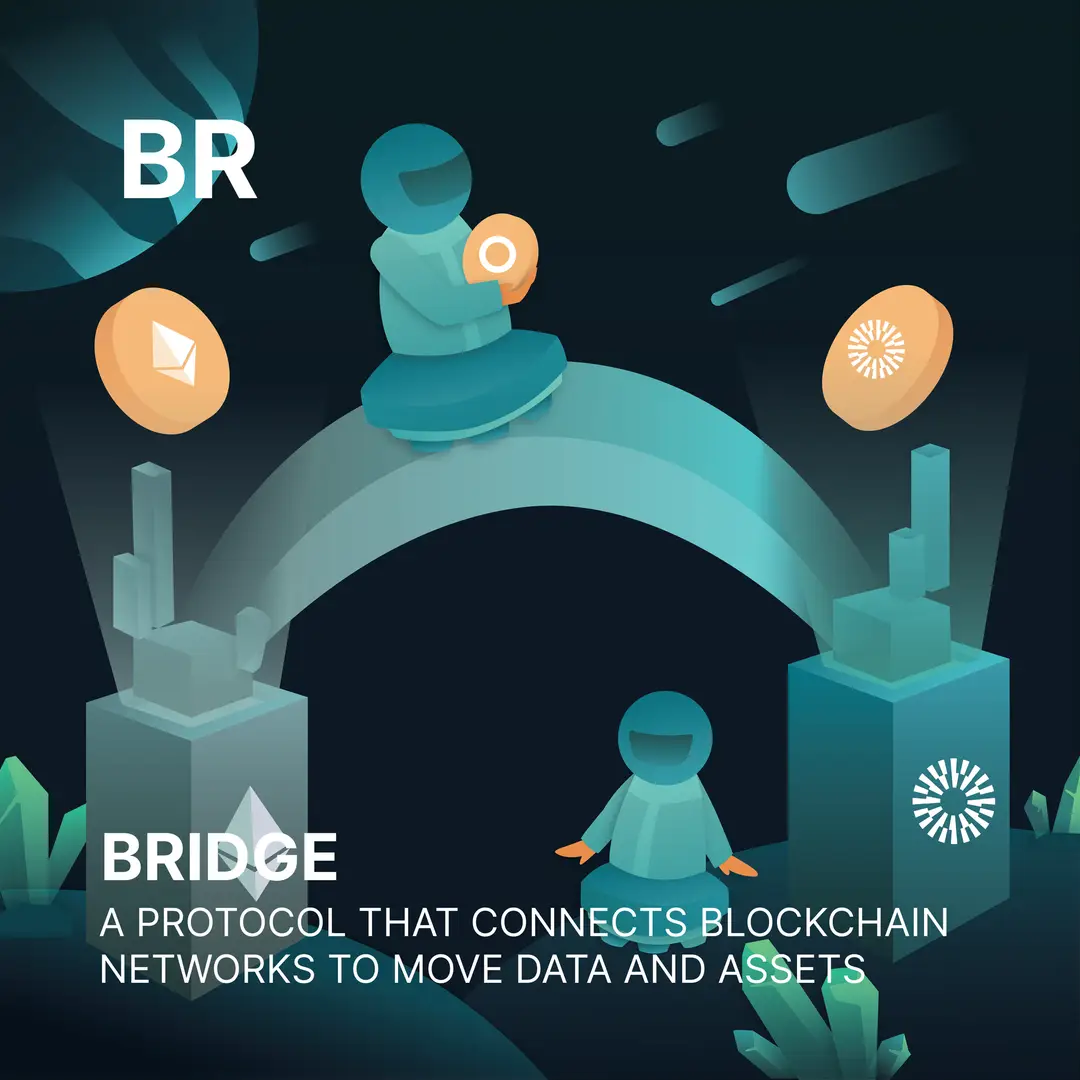Welcome to the world of Web3, where cryptocurrencies, blockchain, and a unique culture converge. Entering the world of Web3 can be both thrilling and overwhelming, especially when faced with the seemingly cryptic language used by enthusiasts. Don't worry if you feel they sound like some secret codes, we are here to unravel their meaning in Web3 context. In this article, we are going to introduce [Bridge].
A bridge in Web3, often referred to as a blockchain bridge or cross-chain bridge, is a technology that allows the transfer of assets and information between two different blockchain networks. This could mean moving cryptocurrencies from one blockchain to another or enabling the interaction of smart contracts across blockchains.
The need for bridges emerged from the inherent limitations of blockchain networks. Each blockchain operates independently with its protocols, rules, and governance models. Early blockchains were designed as closed ecosystems, which led to siloed networks unable to communicate or share resources with each other. As the blockchain space grew, so did the need for interoperability — the ability for different blockchains to interact and share information seamlessly. Bridges were developed as a solution to this challenge, aiming to create a more interconnected and efficient Web3 ecosystem.
Mechanism: At a high level, bridges use a combination of smart contracts and specialized nodes to lock, mint, or burn tokens or data, facilitating their movement between chains. There are two main types of bridges:
These rely on a central authority or group to verify and facilitate the transfer of assets between blockchains. Trust is placed in these intermediaries to act honestly and securely.
These operate in a decentralized manner, using algorithms and smart contracts to automate the verification process without the need for a central authority. This type reduces the risk of fraud and aligns more closely with the decentralized ethos of Web3.
Why are Bridges Important in Web3?
Bridges enhance the connectivity between isolated blockchain networks, enabling a more cohesive and functional Web3 ecosystem where assets and information can flow freely.
Innovation and Flexibility
By allowing different blockchains to interact, bridges foster innovation and flexibility, enabling developers to build applications that leverage the strengths of multiple blockchains.
For users, bridges provide the ability to access a wider range of applications and services with their assets, improving the overall user experience in the decentralized web.
Bridges in Web3 represent a critical step towards achieving a fully interconnected and interoperable digital ecosystem. By enabling the transfer of assets and information between different blockchains, bridges overcome one of the fundamental challenges of the early blockchain era, paving the way for a more integrated, efficient, and user-friendly decentralized internet. As the technology behind bridges continues to evolve, their role in shaping the future of Web3 becomes increasingly significant.
If you would like to learn more about slangs in Web3, let’s explore more in our HackQuest Web3 Glossary!

